Research Spotlight: May 2017
Using specimens to create a pollinator community assessment of restored tallgrass prairie
-- Contributed by Heather Cray, Department of Environment and Resource Studies, University of Waterloo
Animal species need space – a place to forage, grow, and nest. This is especially true of Lepidoptera (butterflies and moths), who’s caterpillars generally feed exclusively on one genus or species of host plant (think monarch butterflies and milkweed). For the 4,000 or so species of native bees in North America, required forage plants and nesting sites vary from common suburban offerings (e.g., patches of bare ground, maples, willows, clover), to specialized needs which are ecosystem-specific. Enter tallgrass prairie – a grassland ecosystem with high forb diversity that supports a dizzying array of invertebrate life. As our continent’s most endangered ecosystem, the 1-3% that remains is a mix of remnant and restored habitat and restoration efforts both large and small are ongoing. For the hundreds of pollinator species that thrive in tallgrass prairie ecosystems, a well-functioning ecosystem should promote a diverse pollinator community. Currently, however, little is known about how pollinators colonize sites following restoration and whether typical restoration practices attract diverse pollinator populations.
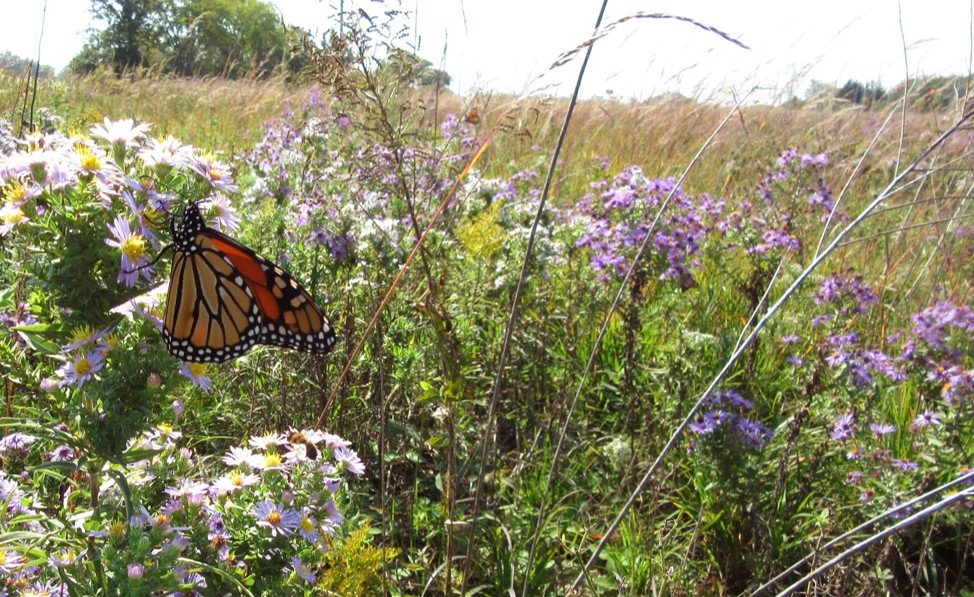
Restored tallgrass prairie sites like this one provide essential pollinator habitat; in this photo alone there are four Monarch butterflies, six native bumble bees, and countless other diminutive foragers.
As part of my PhD research on tallgrass prairie restoration, I wanted to test the “if you build it, they will come” premise of habitat restoration. Specifically, once we begin to restore or create these habitats, do pollinator communities re-establish? To answer this question, myself, Undergraduate Honours student Rachel Greene, and a team of trusty volunteers sampled three restored tallgrass prairie sites at the Glenorchy Conservation Area in Oakville, Ontario, Canada. Using the same seed mix, seed source, timing, and method, these fields were planted in 2012, 2013, and 2014, creating an ideal time series for our investigation.
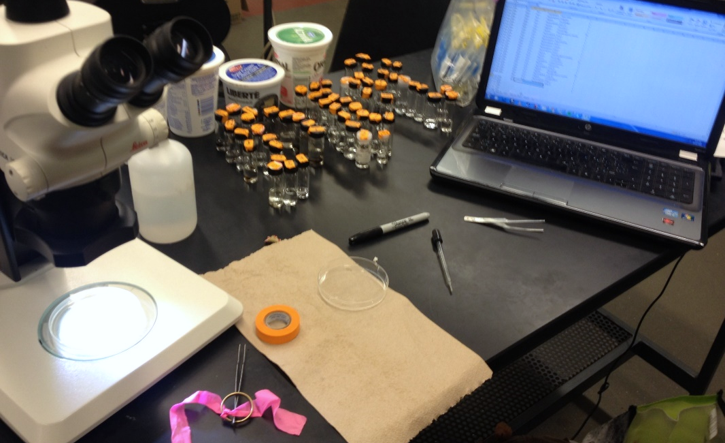
A collection in the making: processing samples back in the lab.
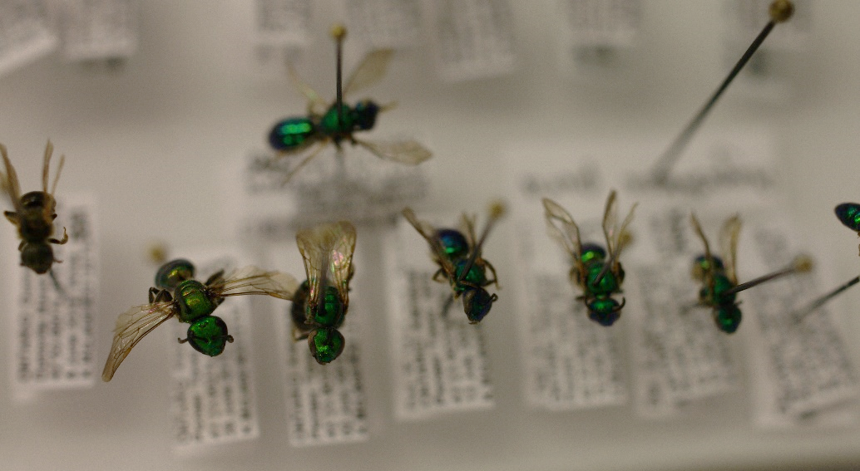
Bee specimens pinned and labeled in the collection.
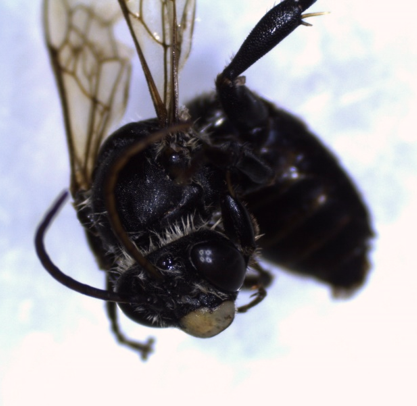
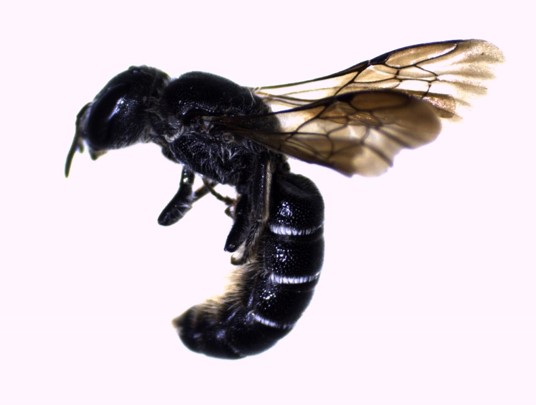
(Left) Male Melissodes sp. bee under the microscope; note the long antenna characteristic of male bees.
(Right) Hoplitis sp. bee (Mason bee) of the family Megachilidae; note the pollen carrying hairs on the underside of the abdomen characteristic of this family.
Heather's field sites are part of the Niagara Escarpment Park System. Find out more here [1].
Check out the iDigBio Portal for more information about common genera encountered in this study, including Bombus [2], Augochlorella [3], Apis [4], Ceratina [5], Hylaeus [6], Lasioglossum [7], Feltia [8], Pieris [9], and Phoebis [10].
